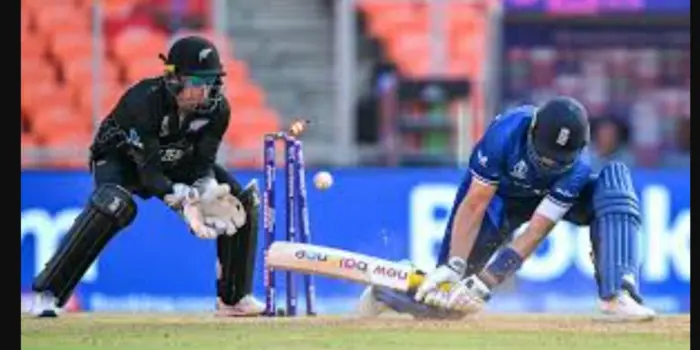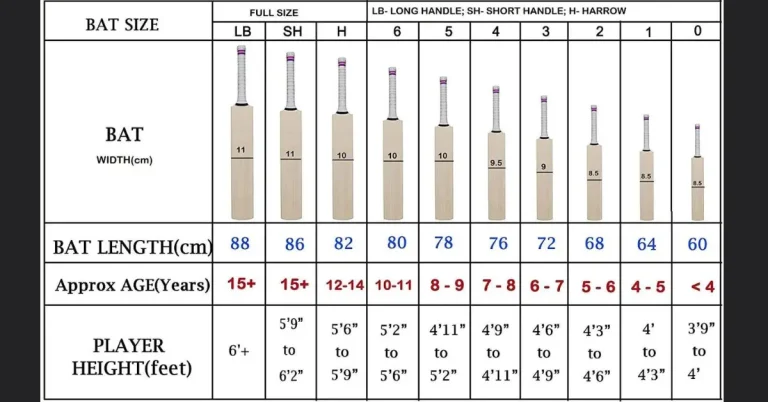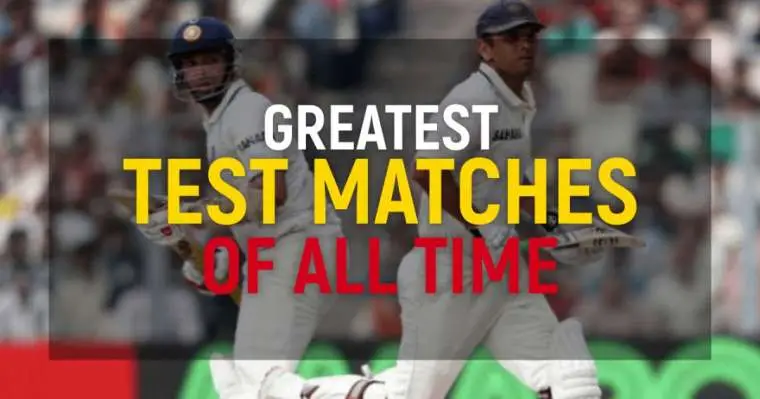What is Strike Rate in Cricket: Batting and Bowling Strike Rate
Strike Rate is defined as the number of runs scored by a batsman per 100 balls faced. Essentially, it tells you how effectively a batsman can accumulate runs within a specific time frame. In this article, we will find out what is strike rate in cricket, its importance, and how it affects the game.
What is Strike Rate in Cricket?
In cricket, “strike rate” is a numerical representation of a player’s performance, specifically their ability to score runs quickly. It is defined as the number of runs scored by a batsman per 100 balls faced. Essentially, it tells you how effectively a batsman can accumulate runs within a specific time frame.
The Formula to Calculate Strike Rate
Strike Rate = (Total Runs Scored / Total Balls Faced)×100
For instance, if a batsman scores 40 runs off 50 balls, their strike rate would be 80 (40 runs divided by 50 balls, multiplied by 100).
Importance of Strike Rate

1. Scoring Speed
A high strike rate indicates that a batsman can score runs at a brisk pace. This is invaluable in limited-overs formats like One Day Internationals (ODIs) and T20s, where the objective is to accumulate runs quickly. See Also: Longest Six in Cricket History
2. Team Strategy
Coaches and captains often rely on strike rates to formulate game strategies. In certain situations, a player with a high strike rate might be preferred over one with a lower strike rate, depending on the match scenario.
3. Pressure Handling
A player with the highest strike rate is usually really good at handling tough moments in a game. They can take charge and score quickly, making a big impact.
4. Entertainment Value
Cricket is not just a sport; it’s a form of entertainment. A high strike rate often adds excitement to the game, keeping spectators engaged.
Understanding Different Formats

In different formats of the game (Test, ODI, T20), the interpretation of a good strike rate varies.
Test Cricket
In the traditional format, a strike rate above 50 is considered decent, as the emphasis is on building an innings steadily rather than scoring quickly.
One Day Internationals (ODIs)
A strike rate of 80-90 is considered good, as ODIs demand a balance between scoring quickly and preserving wickets. See Also: Fastest 50s in Cricket
Twenty20 (T20)
T20 cricket is all about rapid scoring. In this format, a strike rate of 120 or more is usually the norm for top-order batsmen.
Improving Your Strike Rate
For budding cricketers looking to enhance their strike rate, here are some tips:
1. Shot Selection
Choose your shots wisely. Aggressive shot selection can boost your strike rate if executed well.
2. Running Between Wickets
Quick singles and twos can significantly improve your strike rate. Focus on fitness and sprinting to capitalize on every opportunity to score. See Also: Cricket Pitch Length in Feet: Test, ODI, T20
3. Timing and Placement
Improve your timing and placement to find gaps in the field. A well-placed shot can earn you a boundary without much effort.
4. Mental Toughness
Maintain composure and stay focused under pressure. A calm mind is crucial for aggressive batting.
What is Strike Rate in Cricket Bowling

The bowling strike rate is a statistic that measures the effectiveness of a bowler in taking wickets. It is calculated as the average number of balls bowled by a bowler for each wicket they take. A lower bowling strike rate is generally considered better, as it means the bowler takes wickets more frequently. See Also: Best Bowler Of The Indian Cricket Team
How to Calculate Bowling Strike Rate
The formula for calculating bowling strike rate is:
Bowling Strike Rate = (Total Balls Bowled / Total Wickets Taken)
For example, if a bowler has bowled 600 balls and has taken 15 wickets, their bowling strike rate would be 40 (600/15).
FAQ’s
A good strike rate varies by format, but generally, in ODIs, a rate of 80-90 is considered good, while in T20s, 120 or more is ideal.
Yes, in Test cricket, players with a lower strike rate are valuable for building steady innings.
Batting average measures consistency, while strike rate indicates the ability to score quickly.
Yes, playing aggressively can lead to more risk, potentially resulting in more dismissals.
While less crucial than in limited-overs formats, strike rate still matters in Test cricket, as it reflects a player’s adaptability and approach to building an innings.
Conclusion
In conclusion, strike rate is a vital statistic in cricket that measures a player’s ability to score runs quickly. It plays a significant role in modern cricket, especially in limited-overs formats, where the need for rapid scoring is paramount. Understanding the context of the game and adapting your batting style accordingly is key to mastering strike rate. Whether you’re a professional cricketer or just an avid fan, this statistic adds depth and excitement to the game, making it even more thrilling to follow and play.



![Greatest Cricketers of All Time – [ICC Latest Update]](https://sportsmonkie.com/wp-content/uploads/2022/08/Greatest-cricketers-of-all-time-768x474.jpg)



